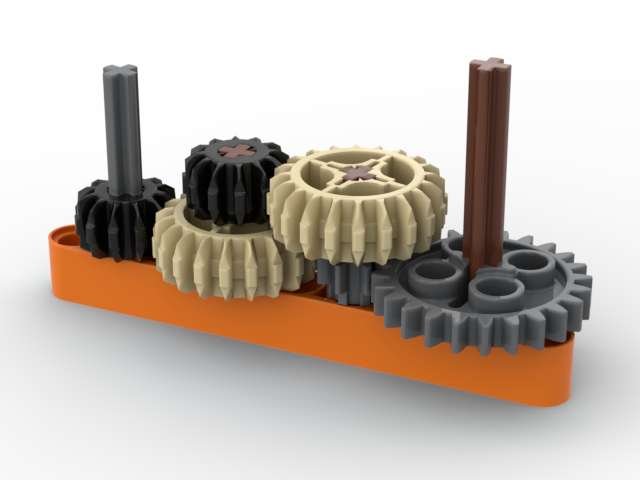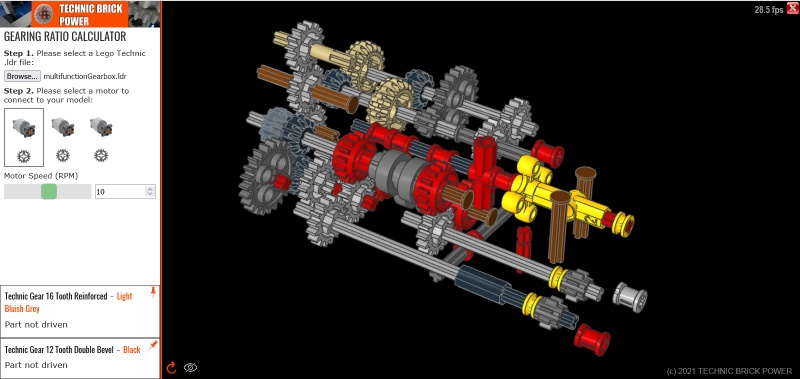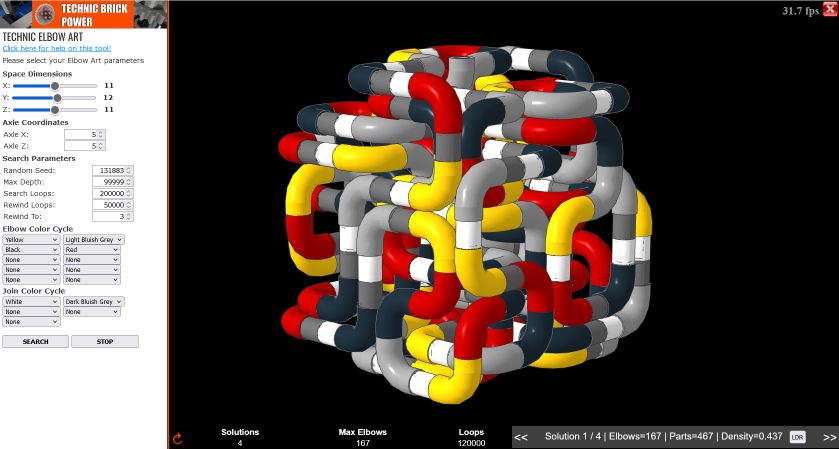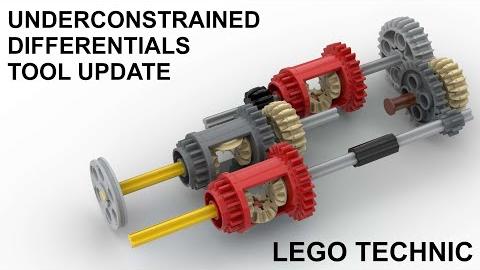How do you calculate the gearing ratio of a gear train?
A gear train is simply a series of gears connected together such that each gear in the series drives the next gear either directly or via another gear on the same axle. The diagram below shows an example of a 3 stage gear train. On the left is the input axle and on the right is the output axle.

The overall gearing ratio between the input axle and the output axle is simply the product of the gearing ratios of all the gear train stages. So in the example:
| Stage 1: | 12 tooth driving a 20 tooth gear = 12 / 20 | = 3 / 5 |
| Stage 2: | 12 tooth driving a 20 tooth gear = 12 / 20 | = 3 / 5 |
| Stage 3: | 8 tooth driving a 24 tooth gear = 8 / 24 | = 1 / 3 |
So the overall gearing ration between the input axle and the output axle is (3 / 5) x (3 / 5) x (1 / 3) = 3 / 25
This means for every 25 rotations of the input axle the output axle will rotate 3 times.
More to explore
How do you make a 1:N gearing ratio?
How do you make a 1:7 gearing ratio?
Lego Technic Gearing Ratio Tool Update
This video presents updates to the Technic Brick Power Lego Technic Gearing Ratio Calculator tool specifically on underconstrained differential systems. These are systems in which the differentials are not fully constrained and therefore have 1 or more degrees of freedom within them.
The ...read more
How do you make a 1:4 gearing ratio?
What is an intermediate gear?
What is a gear train?
What is a gearing ratio?
New Flat 12/20 Gear Friction
The Lego Technic set 42140 App-Controlled Transformation Vehicle introduces two new gears - a flat version of the 12 tooth bevel gear and a flat version of the 20 tooth bevel gear. These gears are designed to have less friction.
In this video I measure the difference in gearing efficiency...read more
Gearing Ratio Calculator Tool Help
Measuring Gearbox Efficiency
This video describes a method for measuring the efficiency of a gearbox using the Lego Technic Powered Up hub. Gearbox efficiency is defined as the ratio of the output power to the input power and here I show how to measure each of these values to allow you to calculate the overall efficiency.read more




